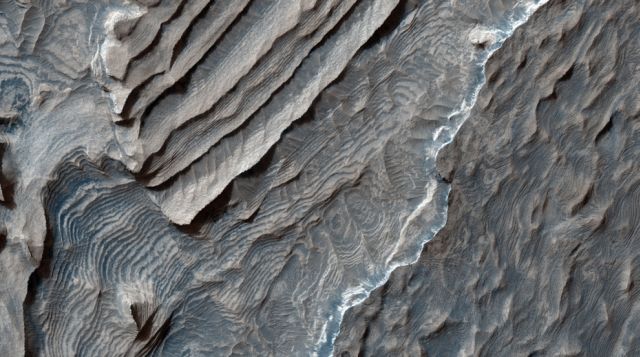|
|
Mars Surface
|
Life
The current understanding of planetary habitability—the ability of a world to develop and sustain life—favors planets that have liquid water on their surface. This most often requires that the orbit of a planet lie within the habitable zone, which for the Sun currently extends from just beyond Venus to about the semi-major axis of Mars. During perihelion Mars dips inside this region, but the planet's thin (low-pressure) atmosphere prevents liquid water from existing over large regions for extended periods. The past flow of liquid water, however, demonstrates the planet's potential for habitability. Some recent evidence has suggested that any water on the Martian surface may have been too salty and acidic to support regular terrestrial life.
The lack of a magnetosphere and extremely thin atmosphere of Mars are a challenge: the planet has little heat transfer across its surface, poor insulation against bombardment of the solar wind and insufficient atmospheric pressure to retain water in a liquid form (water instead sublimates to a gaseous state). Mars is also nearly, or perhaps totally, geologically dead; the end of volcanic activity has apparently stopped the recycling of chemicals and minerals between the surface and interior of the planet.
Evidence suggests that the planet was once significantly more habitable than it is today, but whether living organisms ever existed there remains unknown. The Viking probes of the mid-1970s carried experiments designed to detect microorganisms in Martian soil at their respective landing sites and had positive results, including a temporary increase of CO2 production on exposure to water and nutrients. However, this sign of life was later disputed by some scientists, resulting in a continuing debate, with NASA scientist Gilbert Levin asserting that Viking may have found life. A re-analysis of the Viking data, in light of modern knowledge of extremophile forms of life, has suggested that the Viking tests were not sophisticated enough to detect these forms of life. The tests could even have killed a (hypothetical) life form. Tests conducted by the Phoenix Mars lander have shown that the soil has a very alkaline pH and it contains magnesium, sodium, potassium and chloride. The soil nutrients may be able to support life but life would still have to be shielded from the intense ultraviolet light.
|
|









